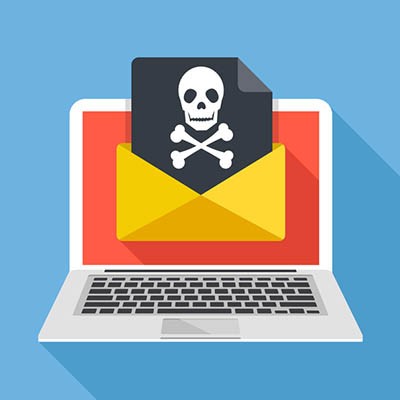By now everyone knows about ransomware, the dastardly strand of malware that encrypts data (or the drives it’s stored on) and sends the user a message demanding payment in a certain amount of time before the data is deleted forever. To add a little more menace to an already stressful situation, the message includes a countdown clock. If it sounds like a bad situation, rest assured it is. How could it get worse you ask? Simple, make it more difficult to stop.
Companies of all sizes spend a pretty penny in IT security and training to ensure that they aren’t the next organization to fall victim of a hacker’s sick joke. What if we told you that all that expense was spent getting ready for an attack that could be already lying dormant in a file in a computer on your network? This could be the case as malware is now going fileless.
Okay, we know what you’re thinking...Fileless malware?! What? Today, we’ll go into what fileless malware exactly is, and how it isn’t great news for most people and businesses.
Starting with some good news is always appreciated, so the reason why hackers are now utilizing more fileless malware is because people and organizations are doing a great job fighting against traditional methods of infection. In fact, 99.9 percent of all would-be malware attacks were turned away in 2017; so, while it didn’t have a marked effect for those organizations that were unlucky enough to have dealt with ransomware or some other devastating strain of malware, lots of would-be attacks were mitigated.
For years ransomware growth has facilitated a major shift in the way that organizations looked at the dangers that are coming from the Internet. Sure, there had been plenty of malware dispersed for years, but fileless malware doesn’t work like other malware. Fileless malware attacks take default Windows tools such as PowerShell and Windows Management Instrumentation (WMI) and use them to support the malicious activity. Powershell and WMI are installed on every single Windows-run machine, and since they are used to manage and support a system’s well-being, they are working to keep the system functioning properly.
How it Works
Luckily for most organizations, the way fileless malware is dispersed is largely the same as most other malware strains, through phishing emails and messages. For this reason, if your organization has been doing its best to train its employees on the best practices to keep free from malware, those initiatives still pertain here.
Instead of an email attachment or link downloading the malware onto your system immediately, fileless malware runs a macro in the RAM of a machine and starts a command line which runs the application. That application, whether it be PowerShell or WMI are then commanded to encrypt the files/drives. After that, the user of the machine gets presented the message saying that the files are being held for payment, setting the ransomware process in motion. Typically, this is when it will give the user a short amount of time to provide payment to regain control over the files.
At Technology Specialists, we know the last thing you need is your operating system turning against you. We also know just how challenging it is to detect this type of malware. We’ve developed solutions and practices to fight even the most targeted and powerful malware. Call us today at 260-422-3979 to learn more about stopping fileless malware and keeping your organization’s IT working for you.
About the author
Technology Specialists has been serving the Fort Wayne area since 1998, providing IT Support such as technical helpdesk support, computer support, and consulting to small and medium-sized businesses.

Comments